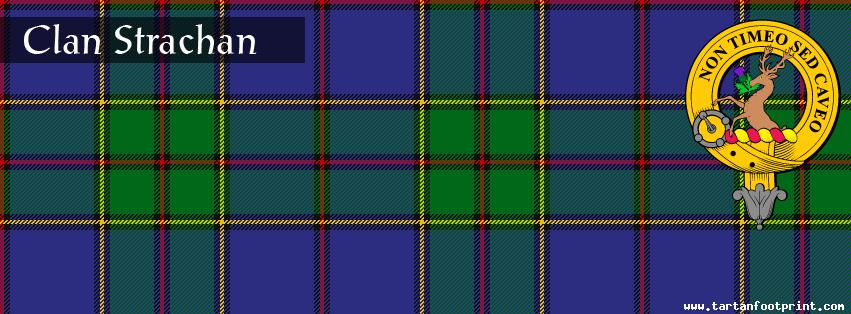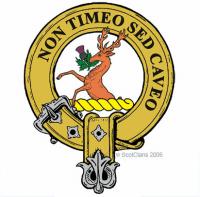
Clan Strachan
The name Strachan derives from the lands of Strachan or Strathachan in Kinkardineshire. The earliest mention of the clan is in 1200 when Walderus de Stratheihen granted lands to the church of St Andrews. In 1278 a charter of Alexander III confirms that John de Strachane (son of Rudolph de Strachane) gave lands to the Abbey of Dunfermline.
The 'de Strachan' Barons were disinherited in 1308 after being defeated at the Battle of Inverurie, at which they backed the Earls of Buchan and Comyn. After Robert the Bruce's son David was captured by the English the family was reinstated. By 1355, almost all the families which had formerly benefited from the Strachans had renewed their allegiance, gaining various lands and privileges. After this time, the five most influential Strachan Houses were Thornton, Monboddo, Glenkindie, Carmyllie, and Lenturk.
Adam Strachan married Margaret Mar, and was subsequently granted the lands of Glenkindie. Strachans are now recognized as a sept of the Tribe of Mar.
Sir James Strachan of Monboddo married Agnete, heiress of the Barony of Thornton in Kinkardine. His elder son Duncan inherited the lands of Monboddo, while the younger son took the lands of Thornton.In 1625 the Strachan Baronetcy, of Thornton, was created in the Baronetage of Nova Scotia for Alexander Strachan, who was a Commissioner of the Exchequer and also a favourite of King Charles I. Alexander's son was Colonel Alexander Strachan, a cavalry officer who distinguished himself by defending Thornton against the Marquis of Montrose in 1646. After transferring his allegiance to Charles II in 1650, he was appointed Commissioner and advisor to the King.
The Baronetcy subsequently passed into the line of Monboddo in 1663.
Admiral Sir Richard Strachan, 6th baronet was created a Knight of the Bath after distinguishing himself at the Battle of Trafalgar, and was granted Freedom of the City of London in 1810.
The title and Baronetcy of the Strachan clan became dormant in 1845 after the last Chief, Admiral Sir Richard John Strachan died in 1828 leaving no heir. The name is now recognized as an Armigerous clan and the current head of the clan is Major Benjamin Strachan who has written a history of the clan, entitled 'A History of the Strachans'
Thornton Castle, 2 miles west of Laurencekirk in Aberdeenshire was formerly the Clan Seat. It passed into the ownership of Alexander Crombie in 1804 and is still inhabited.







